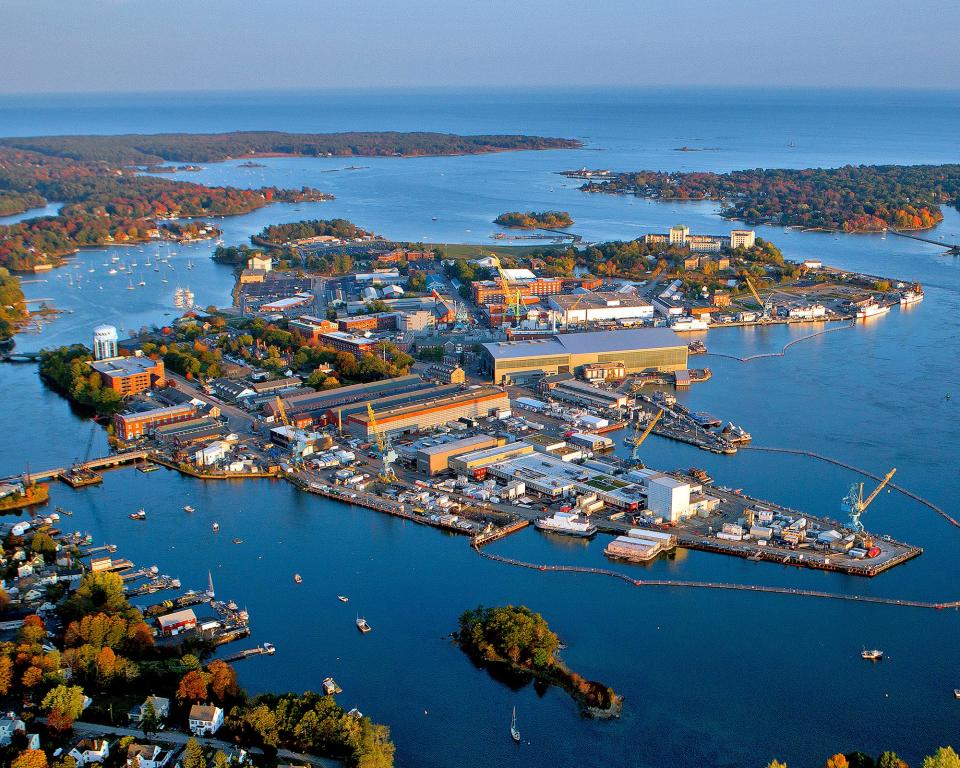Portsmouth Naval Shipyard taken off Superfund list after 30-year cleanup: What to know
KITTERY, Maine — Portsmouth Naval Shipyard has been crossed off the list of the most contaminated sites in the country by the Environmental Protection Agency after a 30-year cleanup process costing millions.
The EPA removed the Seavey Island military installation from its National Priorities List, known otherwise as the nation’s Superfund sites. It was one of three sites around America deleted from the list on Feb. 16. Superfund sites are often manufacturing facilities, processing plants, landfills and mining sites that have been contaminated due to the improper management of hazardous waste.
The United States’ oldest public shipyard was deemed a Superfund site on May 31, 1994 because of toxic materials that had been inadequately disposed of in years past.

Portsmouth Naval Shipyard spokesperson Gary Hildreth previously stated around $25 million had been spent on the cleanup at the shipyard, which is now complete. In mid-August, the EPA formally proposed removing the Portsmouth Naval Shipyard from the Superfund list, which then required a 30-day public comment and review period that has since passed.
"This is a day to celebrate the combined persistence and hard work of the Navy, EPA, and Maine. EPA deletes sites or parts of sites from the Superfund list when no further construction is required to protect human health or the environment," said EPA New England Regional Administrator David W. Cash in a statement. "EPA is very pleased that after many years of working with the Navy and other parties on this complex investigation and cleanup work, we've achieved a major milestone to get this site where it is today and remove it from the National Priorities List."
Sen. Shaheen: Billions to help fund Portsmouth Naval Shipyard's 'most critical piece'
The contamination at the shipyard dates back to 1945.
“From 1945 until approximately 1978, 25 acres of tidal flats between Jamaica and Seavey Islands were filled with wastes including chromium-, lead-, and cadmium-plating sludge; asbestos insulation; trichloroethylene; methylene chloride; toluene; methyl ethyl ketone; drums of waste paint and solvents; mercury-contaminated materials; sandblasting grit containing various metal wastes; and dredged sediments from the Piscataqua River,” the EPA wrote in a description of the shipyard. “Dredged sediment samples collected in the late 1970s near the industrial outfalls were found to contain elevated concentrations of metals, PCBs, and other contaminants. Although Portsmouth Harbor and the lower Piscataqua River are heavily industrialized, the Navy has indicated that the probable source of the sediment contamination is the industrial outfalls at PNS. In addition, hazardous substances attributable to PNS are present at elevated levels in wetlands bordering Seavey Island.”
Norfolk Naval Shipyard in Virginia, the Pearl Harbor Naval Complex in Hawaii and Puget Sound Naval Shipyard Complex in Washington, America’s three other public shipyards, are on the Superfund list.
Contaminants found in the groundwater, soils and sediments at the Portsmouth Naval Shipyard in the past include Polychlorinated biphenyls (PCBs), polycyclic aromatic hydrocarbon (PAHs), metals and benzene.
“Contamination at (Portsmouth Naval Shipyard) is the result of shipbuilding and submarine repair work, landfill operations, spills and leaks from industrial operations and piping, storage of batteries and other materials, filling of land, and outfalls to the river,” the EPA wrote.
Site maintenance and activity monitoring will continue at the shipyard and the Navy must conduct reviews of the campus every five years to submit to the EPA.
The EPA reported that as of Feb. 16, there were 1,335 Superfund sites in the United States, with 10 in Maine and 20 located in New Hampshire, including the Coakley Landfill, the Dover landfill and Pease Air Force Base.
Federal lawmakers formed the Comprehensive Environmental Response, Compensation and Liability Act, now known as the Superfund, in 1980.
This article originally appeared on Portsmouth Herald: Portsmouth Naval Shipyard taken off Superfund list after 30 years

